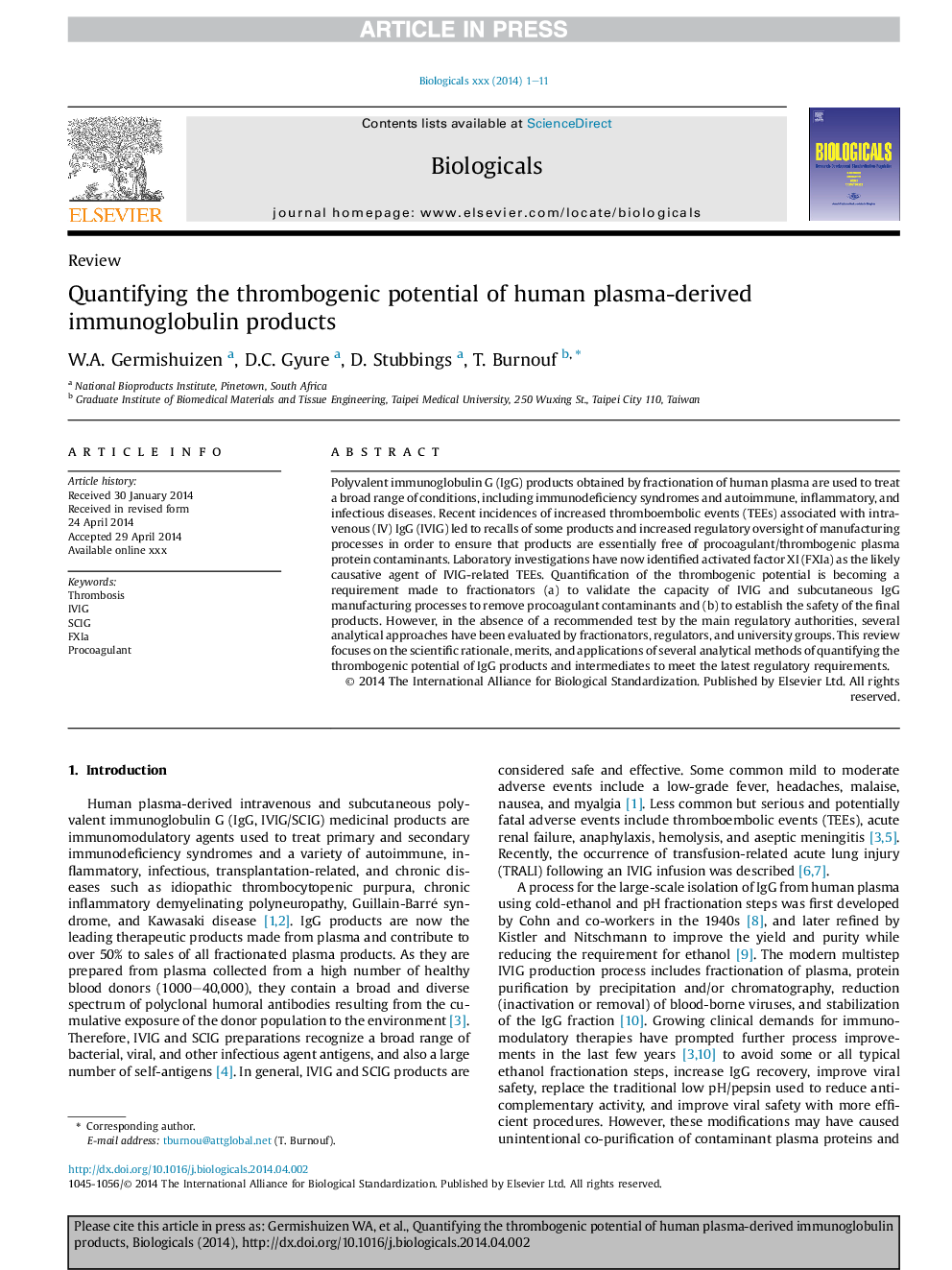| Article ID | Journal | Published Year | Pages | File Type |
|---|---|---|---|---|
| 10852713 | Biologicals | 2014 | 11 Pages |
Abstract
Polyvalent immunoglobulin G (IgG) products obtained by fractionation of human plasma are used to treat a broad range of conditions, including immunodeficiency syndromes and autoimmune, inflammatory, and infectious diseases. Recent incidences of increased thromboembolic events (TEEs) associated with intravenous (IV) IgG (IVIG) led to recalls of some products and increased regulatory oversight of manufacturing processes in order to ensure that products are essentially free of procoagulant/thrombogenic plasma protein contaminants. Laboratory investigations have now identified activated factor XI (FXIa) as the likely causative agent of IVIG-related TEEs. Quantification of the thrombogenic potential is becoming a requirement made to fractionators (a) to validate the capacity of IVIG and subcutaneous IgG manufacturing processes to remove procoagulant contaminants and (b) to establish the safety of the final products. However, in the absence of a recommended test by the main regulatory authorities, several analytical approaches have been evaluated by fractionators, regulators, and university groups. This review focuses on the scientific rationale, merits, and applications of several analytical methods of quantifying the thrombogenic potential of IgG products and intermediates to meet the latest regulatory requirements.
Keywords
Related Topics
Life Sciences
Biochemistry, Genetics and Molecular Biology
Biochemistry, Genetics and Molecular Biology (General)
Authors
W.A. Germishuizen, D.C. Gyure, D. Stubbings, T. Burnouf,
